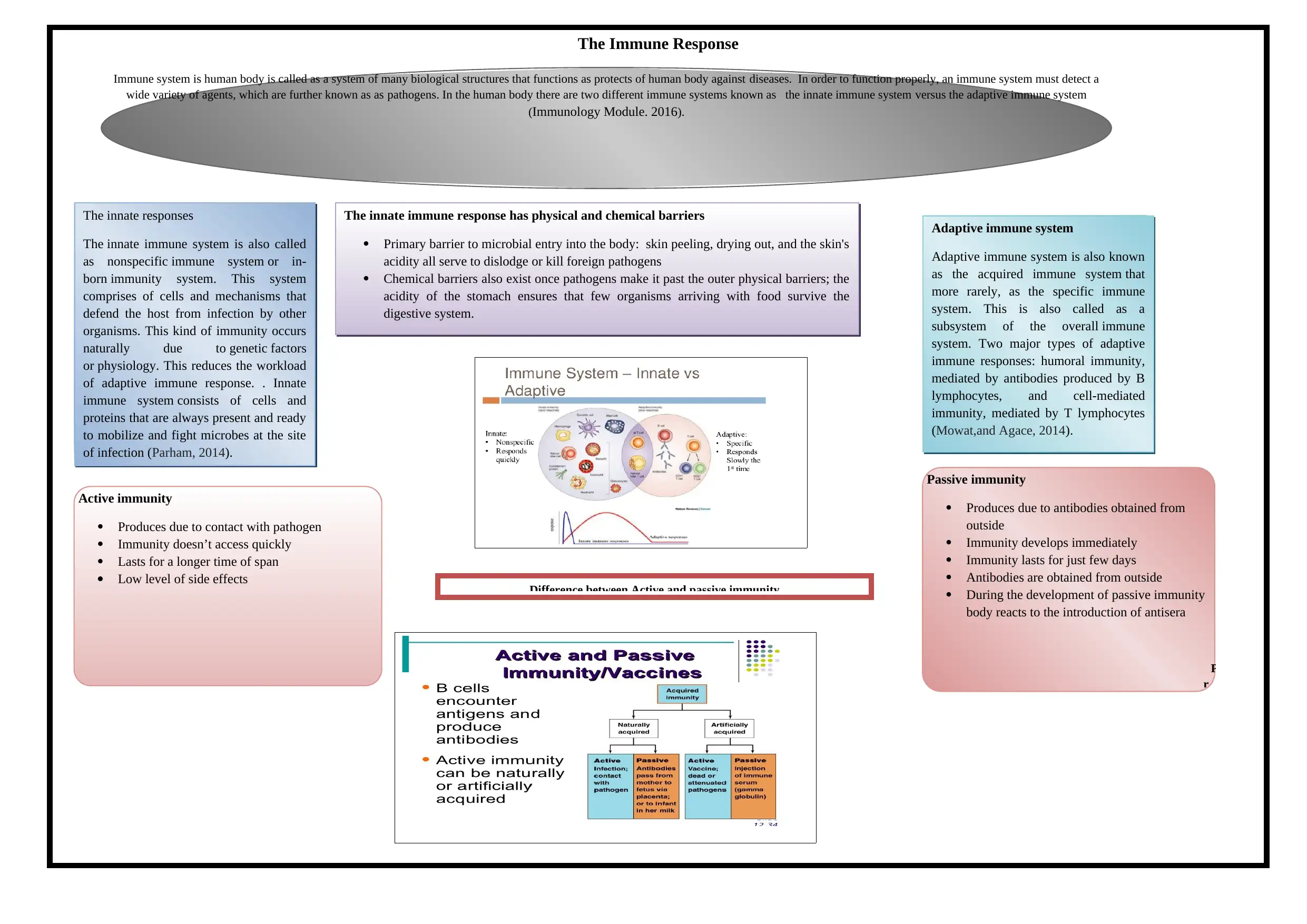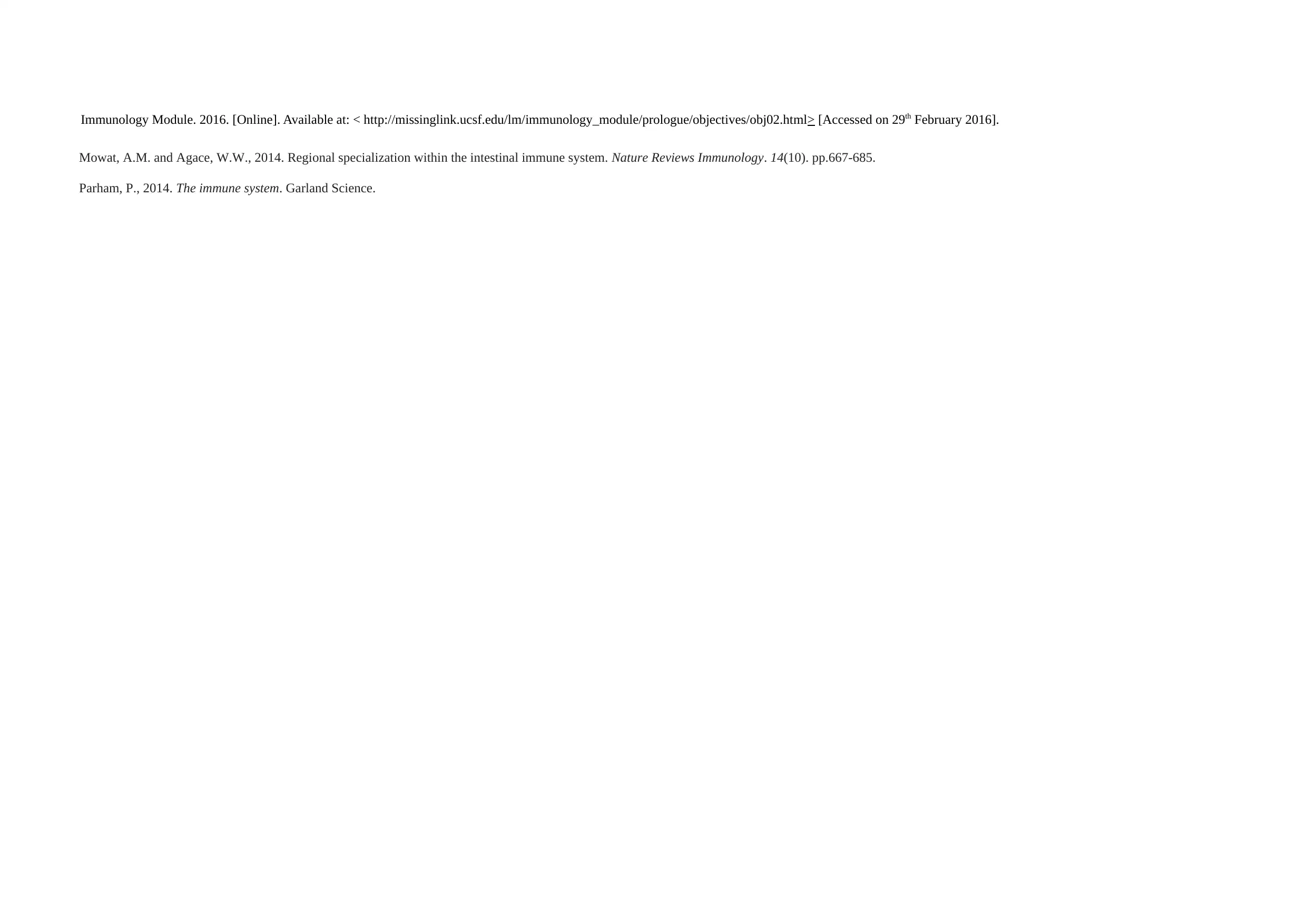Analysis of Adaptive and Innate Immune Systems - Biology Assignment
VerifiedAdded on 2020/01/28
|2
|454
|157
Homework Assignment
AI Summary
This assignment provides an overview of the human immune system, differentiating between the adaptive and innate immune systems. It explores the roles of humoral and cell-mediated immunity within the adaptive system, highlighting the function of B and T lymphocytes. The assignment also details the characteristics and mechanisms of the innate immune system, including physical and chemical barriers, and the differences between active and passive immunity. It references key sources to support the information presented, providing a comprehensive understanding of the immune system's components and functions. The assignment provides a comparison of the characteristics of innate and adaptive immunity, explaining the difference in time taken for the response to initiate, the duration of the response and the side effects associated with the immune response.
1 out of 2








![[object Object]](/_next/static/media/star-bottom.7253800d.svg)